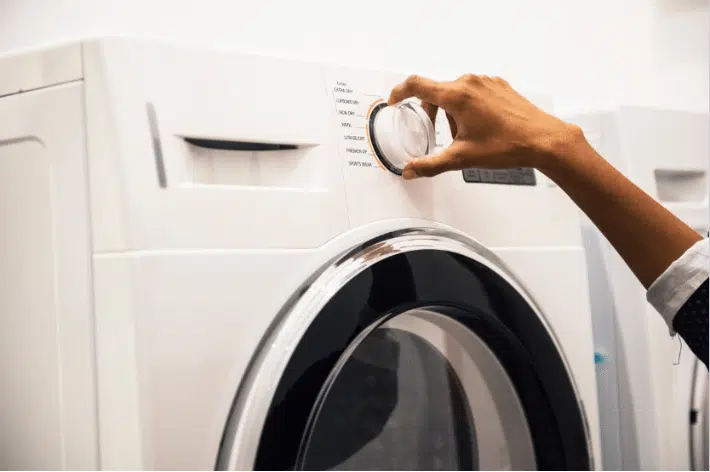Washing your laundry at the right temperature in your washing machine can be a bit tricky. While you can often rely on the label that displays the maximum recommended temperature, washing at a lower temperature, such as 30°C, can be more eco-friendly and cost-effective. It also allows you to better control your daily electricity consumption, as washing machines can account for more than 6% of household energy usage. Let’s explore the benefits of washing at 30°C and what can be washed at this lower temperature.
Good reasons to wash your laundry at 30°C:
1. Suitable for (almost) everything: Modern detergents and washing machines are highly effective even at lower temperatures. You can achieve excellent results on normally soiled laundry without using excessive detergent. Many current detergents contain powerful enzymes. To ensure consistently clean laundry, it’s a good practice to pre-treat stains with natural stain removers like baking soda, black soap, or Marseille soap, and to apply white vinegar to areas with perspiration stains to help remove them and deodorize.
2. Economical: Setting your washing machine to 30°C can save a significant amount of energy. Washing at 60°C consumes about 1.3 kWh, while washing at 30°C consumes only about 0.4 kWh. The difference in energy consumption can lead to noticeable savings on your utility bills, especially over the long term. You can also take advantage of off-peak hours to maximize your savings.
3. Environmentally friendly: In Europe, approximately 60% of the carbon footprint from laundry detergent is associated with washing temperature. Lowering the washing temperature from 40 to 30 degrees can reduce CO2 emissions by 35% in one month. This simple change can have a positive impact equivalent to removing two million cars from the road or the electricity consumption of a city like Nantes. A 3°C reduction in average washing temperature in Europe could eliminate emissions equivalent to those produced by over 700,000 cars per year. Additionally, washing synthetic fibers at high temperatures releases microplastics into the environment, contributing to pollution.
4. Preserves laundry: Washing at a lower temperature reduces wear and tear on textile fibers, lowering the risk of color bleeding and prolonging the lifespan of your clothes. This means you don’t have to replace your clothing as frequently, saving you money in the long run.
5. Extends the life of your washing machine: Washing clothes at a cooler temperature also reduces the strain on your washing machine, potentially extending its lifespan. This can help preserve rubber parts and reduce wear on plastic components, ultimately saving you from the hassle and expense of replacing or repairing your machine.
Important: 30°C may not always be sufficient: While 30°C is suitable for most everyday laundry, there are some exceptions. Tea towels, laundry from a sick person, and heavily soiled items like sportswear and baby clothes may still require washing at 60°C. To effectively combat bacteria on underwear, washing at 40°C is recommended, as is the case for bath towels, sheets, and handkerchiefs. Always follow care label instructions for specific items when in doubt.

